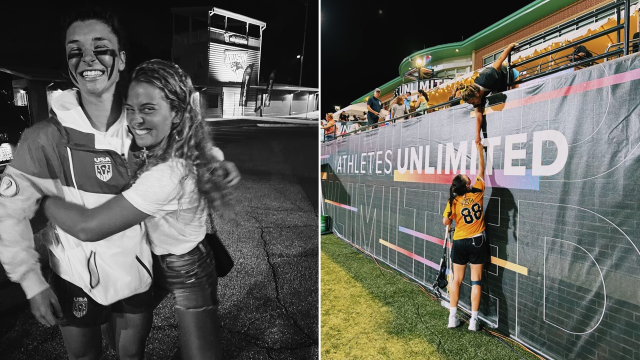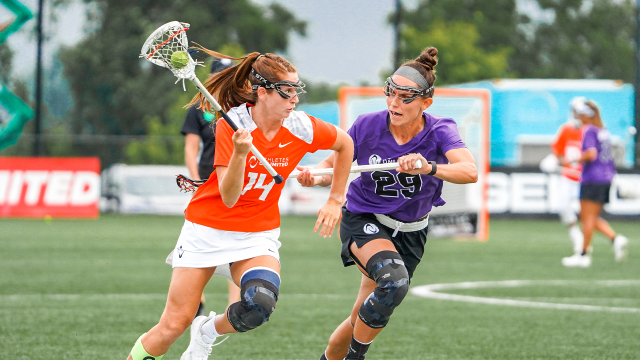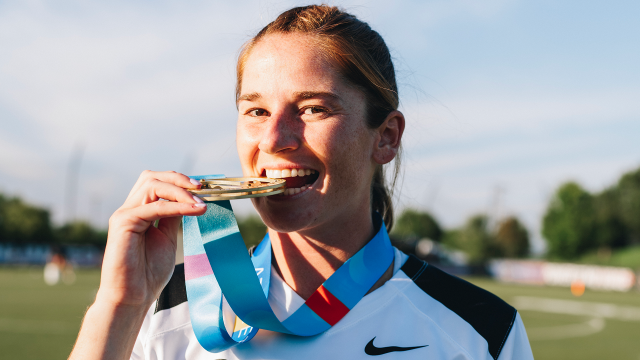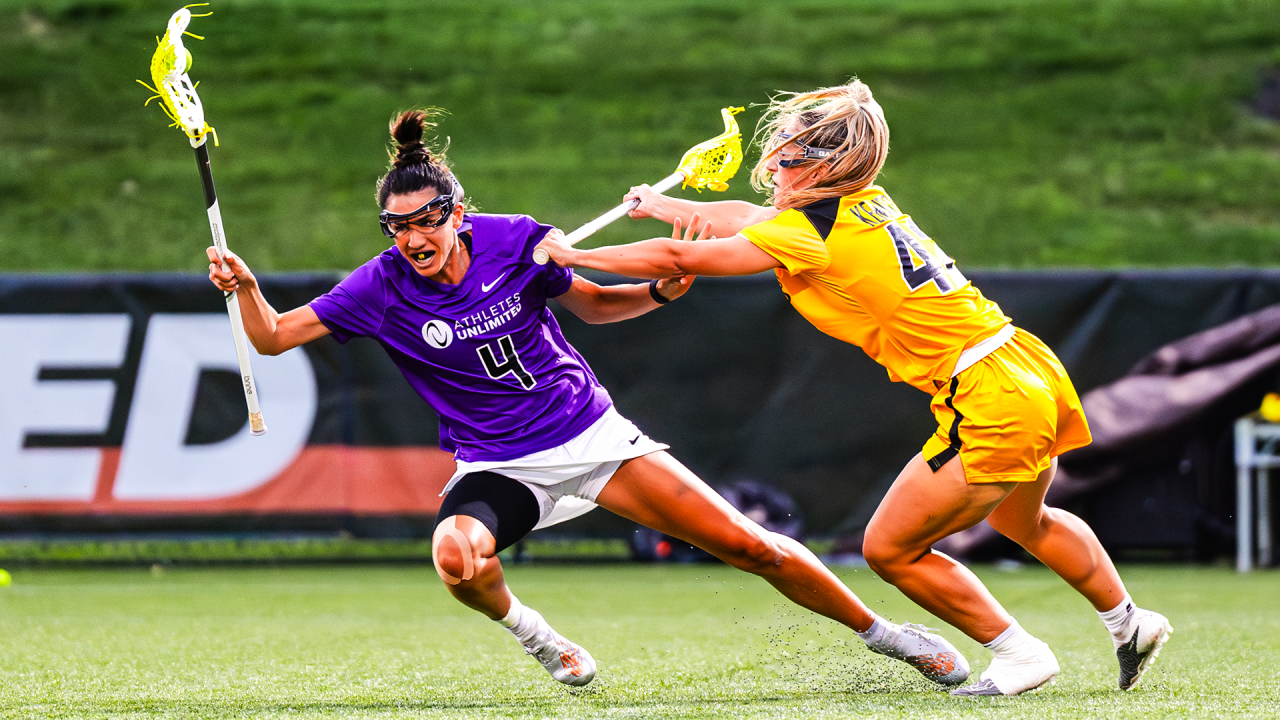
Point Taken: How (and Why) AU Implemented Scoring Changes
Athletes Unlimited will set a record when it takes the field Thursday at USA Lacrosse headquarters. The league’s fourth season will make it the longest-running professional opportunity for women’s lacrosse players, officially surpassing the United Women’s Lacrosse League that played from 2016-18.
It will also unveil a new points system. Among the most significant changes, the penalty for a turnover is decreased from -10 points to -5 points. The award for caused turnovers is now 10 points, a four-point decrease from 14.
The changes mark a reversal of last year’s point-change focus, which saw an increase in the award for caused turnovers (12 to 14 points) and turnover penalties (-8 to -10 points). The 2023 changes were designed to give defenders a chance to win in a league that awards money to the highest individual performers rather than teams but raised safety concerns in practice.
“We were seeing an uptick in plays that could be perceived as dangerous, particularly to an average viewer,” said Abi Jackson, AU’s director of lacrosse. “We were seeing an unintended consequence of some of the scoring system changes that we made the year before to give defenders more of an even playing field to get into the top 10. People were getting creative with checking, really going into the body with the shaft of the stick and getting into the hands of players trying to cause these turnovers.”
Safety is a familiar refrain in the women’s game, which is trying to balance players’ increased athleticism and speed — which makes it entertaining and TV-friendly — with maintaining the sport’s integrity. Last summer, the NCAA introduced new rules, including one-minute green card penalties to curb plays deemed unsafe, like checking.
As an assistant coach at Boston College and member of the Player Executive Committee, Sam Apuzzo, AU’s back-to-back runner-up finisher, has been a part of the discussion at both levels. To her, player safety and entertainment isn’t an either-or proposition.
“Everyone has great skill at this level, whether it's quick hands or stickwork,” Apuzzo said. “Putting more emphasis on the skill versus brute force is a way to honor the game and push skill versus physical pushing. The changes in cross-checking and dangerous checks resemble what we want the game to look like.”
On the safety front, there’s also a change to the “walling” rule, which prohibits defensive players from sagging off in the path to goal in front of the goal to discourage an attacker from shooting. Under the rule, an attacker receives a red card if the shot hits a defensive player above the knee. The rulebook implied walling could only be called on a group of players, which made it difficult to enforce as only one person serves the resulting penalty. The league clarified that the officials could call it on one person, giving them a clear mechanism to justify the call while maintaining player safety and consistency.
“It gives the refs of functionality to point to and say, ‘I'm calling walling on you, number 27,’” Jackson said.
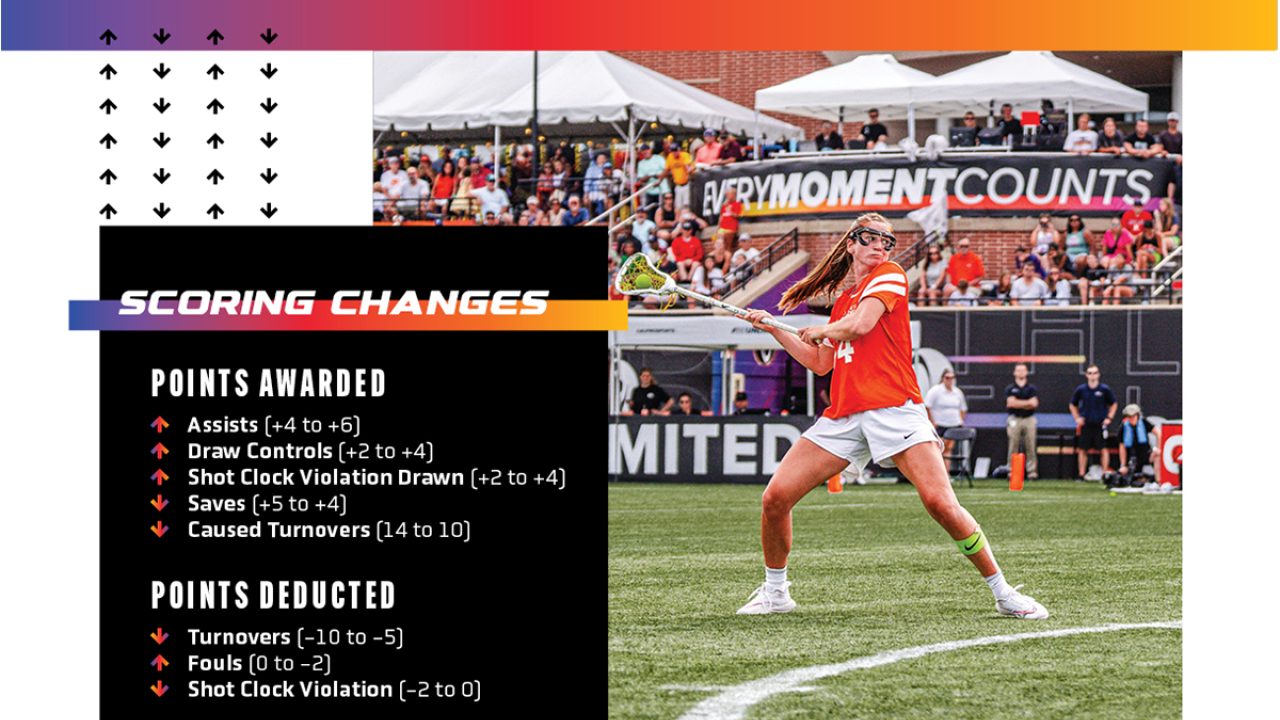
Additionally, the players wanted to have more conversations about the point system, feeling the penalties for turnovers were too high.
“Let’s say, for example, you're deciding whether or not to feed the ball inside,” Jackson said. “Then, the person you're feeding it to doesn't catch it. You're going to get hit with it minus 12-point turnover. We don’t want to handcuff a position.
Speaking of which, the league reduced saves by one point for the second straight season. Taylor Moreno is the back-to-back champion, and three goalies have finished in the top five in each of AU’s first two seasons (Britt Read in 2021, 2022, and ’23; Kady Glynn in 2021 and ’23; and Caylee Waters in 2021 and ’22). The tweak is not meant to prevent a goalie from winning again, nor is it to diversify the leaderboard.
“Taylor’s save percentage was around 70 percent, which is unbelievable,” Jackson said. “If you look at the leaderboard and ask, ‘Is their position reflective of their contribution on the field?’ If Taylor is winning with a 55-percent save percentage, there’s a problem. But if it’s an unheard-of number of 70 percent, then you have a case to win.”
Co-founders Jon Patricof and Jonathan Soros and the data analytics team participated in discussions, but they were player-led, a hallmark of AU since its inception. Players from every position, including goalie Mira Shane, were represented on panels to improve the scoring system.
“The beauty of the league is that we do have that voice, and it's surrounding us,” Apuzzo said. “It’s been a trial and error for the past few years saying what we can make better … The process has been incredible, and those who were on the committee took everything into account.”
The college game required a learning process, particularly in the opening games. AU plays a five-week season. However, Apuzzo points out that the three-game weeks should help players adapt more quickly and create a (safe) show for fans.
“We're lucky we have some of the best officials in the country, and they’re quick to help, adjust and even talk to us about what they think,” Apuzzo said. “That first week is definitely going to be a learning curve for everyone. But because the players in the league are at the height of their lacrosse careers, we’ll get it down by Sunday and play within the new rules.”
Beth Ann Mayer
Beth Ann Mayer is a Long Island-based writer. She joined USA Lacrosse in 2022 after freelancing for Inside Lacrosse for five years. She first began covering the game as a student at Syracuse. When she's not writing, you can find her wrangling her husband, two children and surplus of pets.

Categories
Tags
Related Articles
